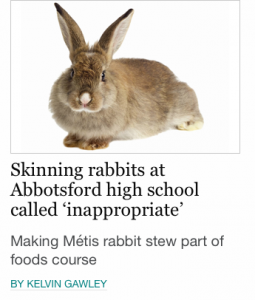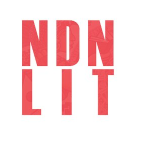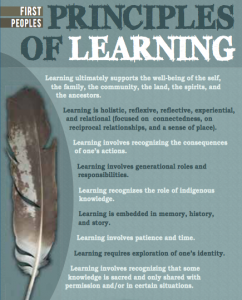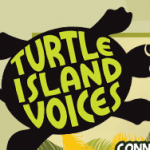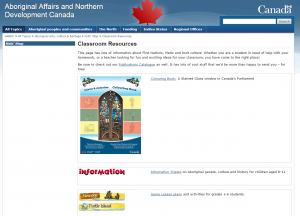Throughout this course I have been really opening my eyes to resources that are coming directly from Indigenous communities or community members, that are being shared out into the “mainstream media”, and that can be utilized in our education system. I have been looking for articles and resources that open up the conversation and that help to bridge communities.
I have been having great discussions with colleagues within my school community, both Indigenous and non-Indigenous, and these conversations include resources, topics for discussion, and areas for further investigation. Taking the time to seek out information and resources has certainly opened my eyes to concerns I was unaware of, and has given me more perspective. I am looking forward to continuing this journey and seeking out additional resources and information to support the curriculum and all of our students.
Post 1 – The Water Walker
This CBC news article, and the book to which it speaks, is helping look at clean water from an Aboriginal woman’s perspective. It is based on actual events that “marries the First Nations’ sense of oneness with the natural world with 21st century concerns for the environment” and written and illustrated by AnishinaabKwe author Joanne Robertson.
http://www.motherearthwaterwalk.com
Post 2 – Home Economics and Culture
This article is from the November 3 Langley Times and brings forward an interesting and controversial topic. When educators are bringing in Indigenous practices, in this case food sources and preparation, into a high school classroom, controversy erupts. One practice is considered “inappropriate” by a group, while many comments (on social media….) support this teachers’ decision. They speak to the hypocrisy that our Home Economics classes can use beef or chicken in their cooking, but when it comes to something such as rabbit, it is inappropriate. Cultural practices collide. I am looking forward to the discussion that evolves from this.
Post 3 – First Nations Child & Family Caring Society
https://fncaringsociety.com/educational-resources
This site provides a number of educational activities to help support children and families. With links to books, digital resources, and films (to name a few), educators have resources to “touch on several topics in Indigenous history and culture, an aim to broaden perspectives and encourage critical thinking”.
https://fncaringsociety.com/sites/default/files/Primary%20Resources%20template.pdf
Post 4 Native Lit and Culture
Twitter @NDNLit
Native Lit and Culture is a bi-weekly newsletter on Indigenous literature and culture. While from New Mexico, posts on their website and blog highlight a variety of issues, challenges and opportunities of Indigenous peoples all around the world. They share resources, poetry, books, and other website that share culture and a variety of perspectives to keep conversations and awareness happening.
Post 5 – Youth, Technology, and Empowerment
Continuing with our discussion of youth and technology, I have found several links to stories where Indigenous youth are making a difference and sharing their stories through social media, film, music. These youth are sharing their thoughts, feelings, and perspectives and putting it out into the world.

